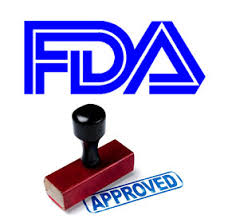- Home
- Editorial
- News
- Practice Guidelines
- Anesthesiology Guidelines
- Cancer Guidelines
- Cardiac Sciences Guidelines
- Critical Care Guidelines
- Dentistry Guidelines
- Dermatology Guidelines
- Diabetes and Endo Guidelines
- Diagnostics Guidelines
- ENT Guidelines
- Featured Practice Guidelines
- Gastroenterology Guidelines
- Geriatrics Guidelines
- Medicine Guidelines
- Nephrology Guidelines
- Neurosciences Guidelines
- Obs and Gynae Guidelines
- Ophthalmology Guidelines
- Orthopaedics Guidelines
- Paediatrics Guidelines
- Psychiatry Guidelines
- Pulmonology Guidelines
- Radiology Guidelines
- Surgery Guidelines
- Urology Guidelines
FDA approves BOTOX for upper limb spasticity in kids aged 2-17

The US Food and Drug Administration (FDA) has announced the approval of BOTOX for the treatment of pediatric patients from 2-17 years of age with upper limb spasticity.
Spasticity can happen due to damage to the brain and spine and the symptoms of spasticity are observed as muscle tightness and stiffness in the upper and lower limbs. Upper limb spasticity can interfere with movement at the joints of the upper limb and its severity can range from mild to severe muscle stiffness. Common causes of spasticity in children include cerebral palsy, traumatic brain injury, multiple sclerosis, spinal cord injury, and stroke, which is a group of disorders affecting one's ability to move and maintain balance and posture.
The Food and Drug Administration approval is based on data from two Phase 3 studies evaluating the safety and efficacy of BOTOX in over 200 pediatric patients with upper limb spasticity. These trials included a 12-week, double-blind study, and a one-year open-label extension study. Allergan, the manufacturer of BOTOX has announced the approval.
BOTOX was granted a six-month Priority Review by the Food and Drug Administration, which is typically granted to therapies that if approved, could offer significant improvements in safety and effectiveness when compared to the current standard of care. The Food and Drug Administration, FDA is also reviewing an additional sBLA for the use of BOTOX to treat pediatric patients with lower limb spasticity, with a decision expected in the fourth quarter of this year.
"Watching a child suffering with any degree of upper limb spasticity is very difficult," said David Nicholson, Chief Research and Development Officer, Allergan. "This Food and Drug Administration, FDA approval is special to all of us at Allergan because we can now provide children and their caregivers an advancement in pediatric care with BOTOX. This milestone underscores our constant focus on innovation and builds on our 30-years of research and development efforts with BOTOX since Food and Drug Administration,FDA approval of blepharospasm and strabismus in 1989. We also look forward to the FDA's decision on pediatric lower limb spasticity and continuing to serve our patients globally."
"Pediatric upper limb spasticity is a significant concern and can negatively impact a child's development and quality of life," said Mark Gormley, Jr. M.D., Pediatric Rehabilitation Medicine Specialist, Gillette Children's Specialty Healthcare-St. Paul. "Because spasticity is particularly debilitating to growing children, it requires ongoing care. BOTOX® has a well-established safety and efficacy profile and I believe it will be an important treatment option in helping successfully manage upper limb spasticity in children and adolescents."
The approved recommended dose per treatment session is 3 Units per kilogram to 6 Units per kilogram divided among affected muscles of the upper limb. The total dose in pediatric patients should not exceed 8 Units per kilogram body weight or 300 Units, whichever is lower, in a 3-month interval. Treatment with BOTOX is not meant to replace existing physical therapy or other rehabilitation that may have been prescribed.

Disclaimer: This site is primarily intended for healthcare professionals. Any content/information on this website does not replace the advice of medical and/or health professionals and should not be construed as medical/diagnostic advice/endorsement or prescription. Use of this site is subject to our terms of use, privacy policy, advertisement policy. © 2020 Minerva Medical Treatment Pvt Ltd